MA Biodesign students collaborated with Maison/0 to answer the question: how can biodesign propose new concepts at the service of nature for the luxury sector? Results span from lipstick made using microalgae to bio-sequins created from the particles filtered from the waste water of the dyeing process.
The Design For Nature project was commissioned by LVMH and is currently on show at the International Union for the Conservation of Nature Congress in Marseille, France.
'This project coincided with the beginning of the pandemic when students were supported remotely and all biological experimental work developed in their own DIY labs at home. I am proud of the outcomes reflecting a deep collaboration, resilience and adaptability, care and share which are at the core of our course. The range was impressive from cosmetics to products protecting certain insects – several projects on textile innovation stand out for me, work developed with bio pigments and bio binders using fungi, bacteria and algae crafted using various traditional textile techniques of weaving, print and embroidery, but also 3D printing, which I found truly innovative and cutting-edge.'
Nancy Diniz, Course Leader of MA Biodesign
"For Maison/0 it is critical to engage with both climate and biodiversity repair via our creative practice. How do we design as nature and for nature? So, the opportunity to collaborate with the LVMH Environment team and the new MA Biodesign course to showcase the agency of design at the IUCN ‘Congress on Nature ‘ was very exciting. I was privileged to work with talented designers to explore what this emergent field can achieve for a new and regenerative luxury at the service of Nature."
Carole Collet, Director of Maison/0
To see more projects, explore MA Biodesign's Instagram.
-
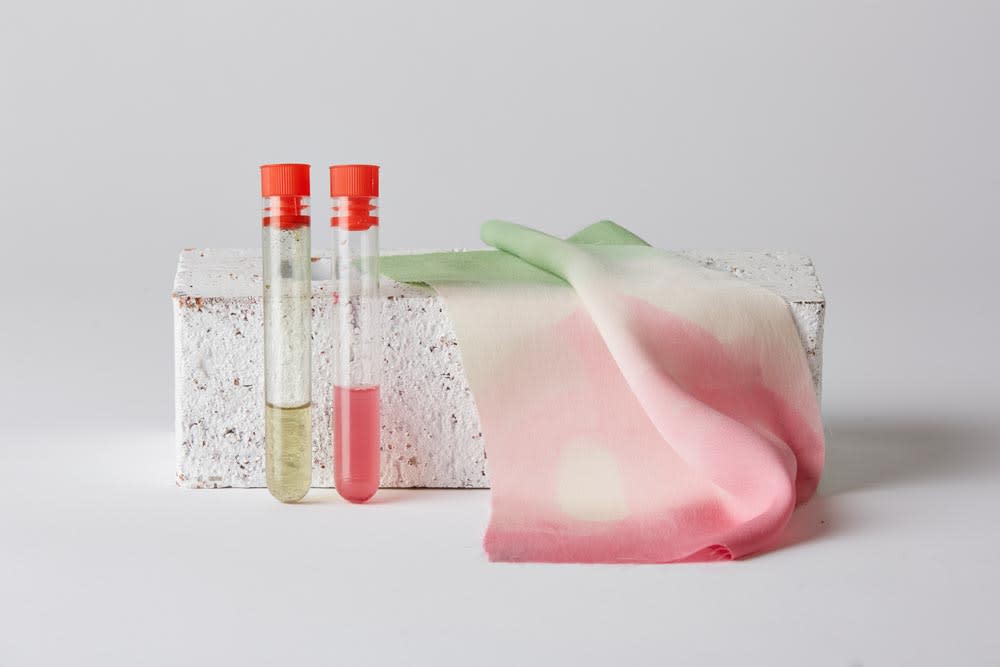
Tahiya Hossain, Algae Palette, MA Biodesign
-
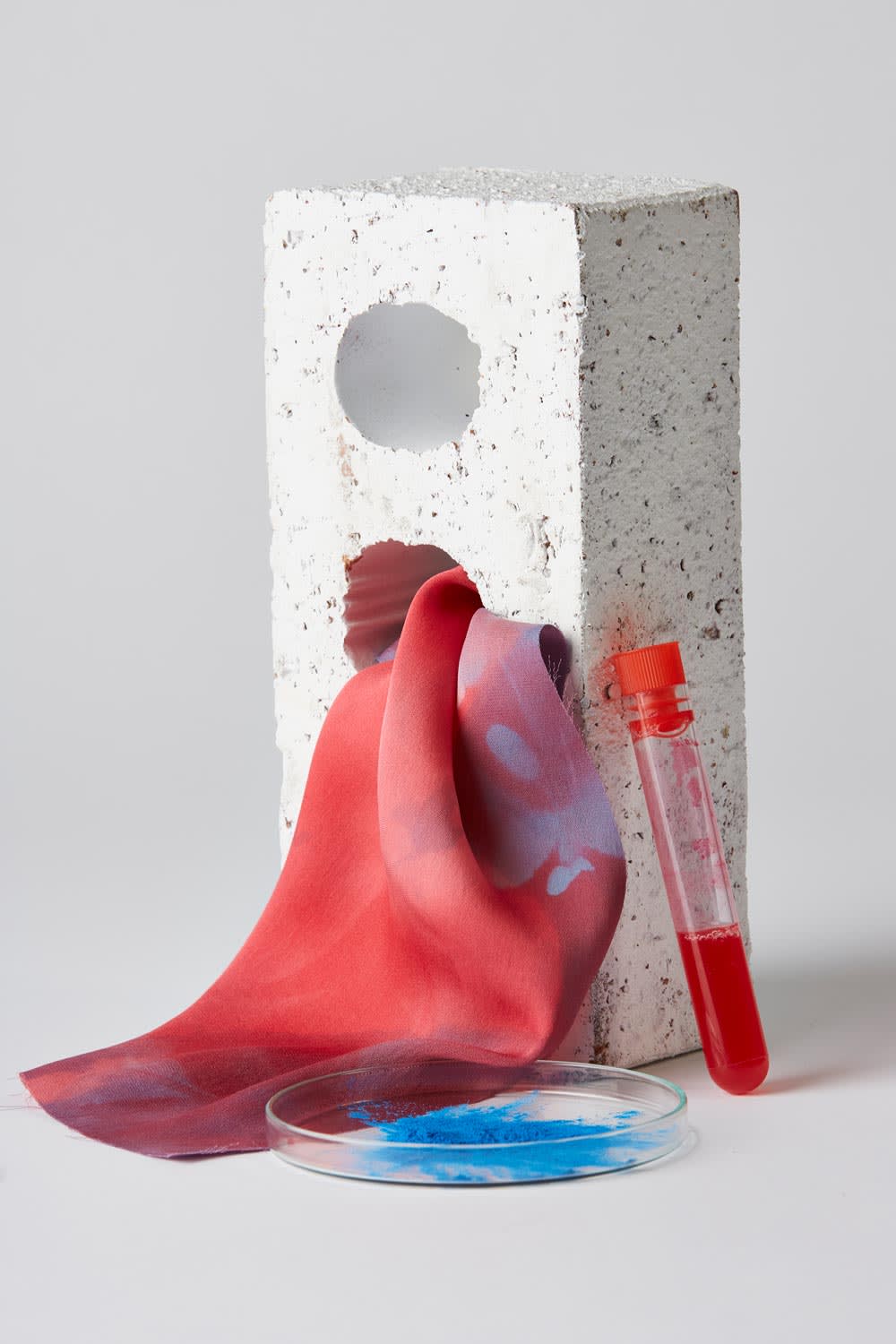
Tahiya Hossain, Algae Palette, MA Biodesign
Algae Palette
Tahiya Hossain
"Algae Palette is a collection of textile prints dyed with extracted colours from macroalgae species. I collected several different species from the UK ranging from reds, greens and blues. The vibrancy of these colours allowed me to create a palette of several shades to play with textile dyeing, such as tie-dyes. Traditional techniques like tie-dyeing allow the algae dyes to take control of the prints on silk and cotton.
Bringing algae dyes into luxury fashion reduces the use of chemical and toxic dyes."

Excessories
Cassandra Quinn
"Dyeing our fabrics produces huge amounts of waste that is difficult to clean due the particles being suspended within the water, Excessories sets out to resolve this. Extracts from the shells of seafood waste are added to textile dye wastewater and a reaction occurs that separates the dye particles from the water. This results in clean water and a pigmented biopolymer. The pigmented biopolymer is then manipulated to create luxurious bio-sequins and embellishments for textile designs.
This design was inspired by footage capturing vibrant life underneath the Antarctic ice sheet."
-
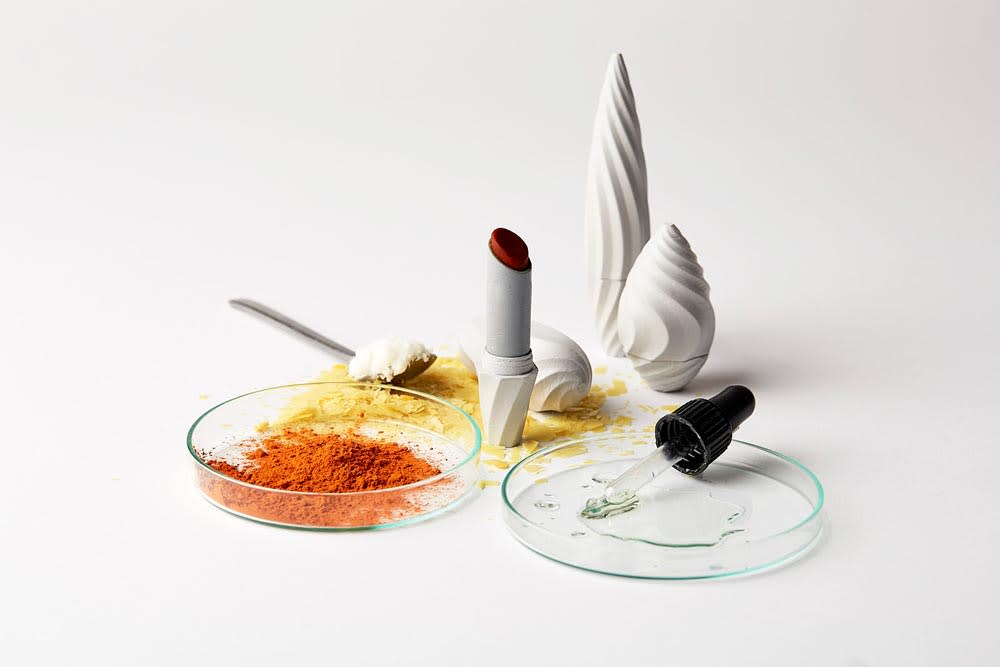
Eleonora Rombola, Algalip, MA Biodesign
-
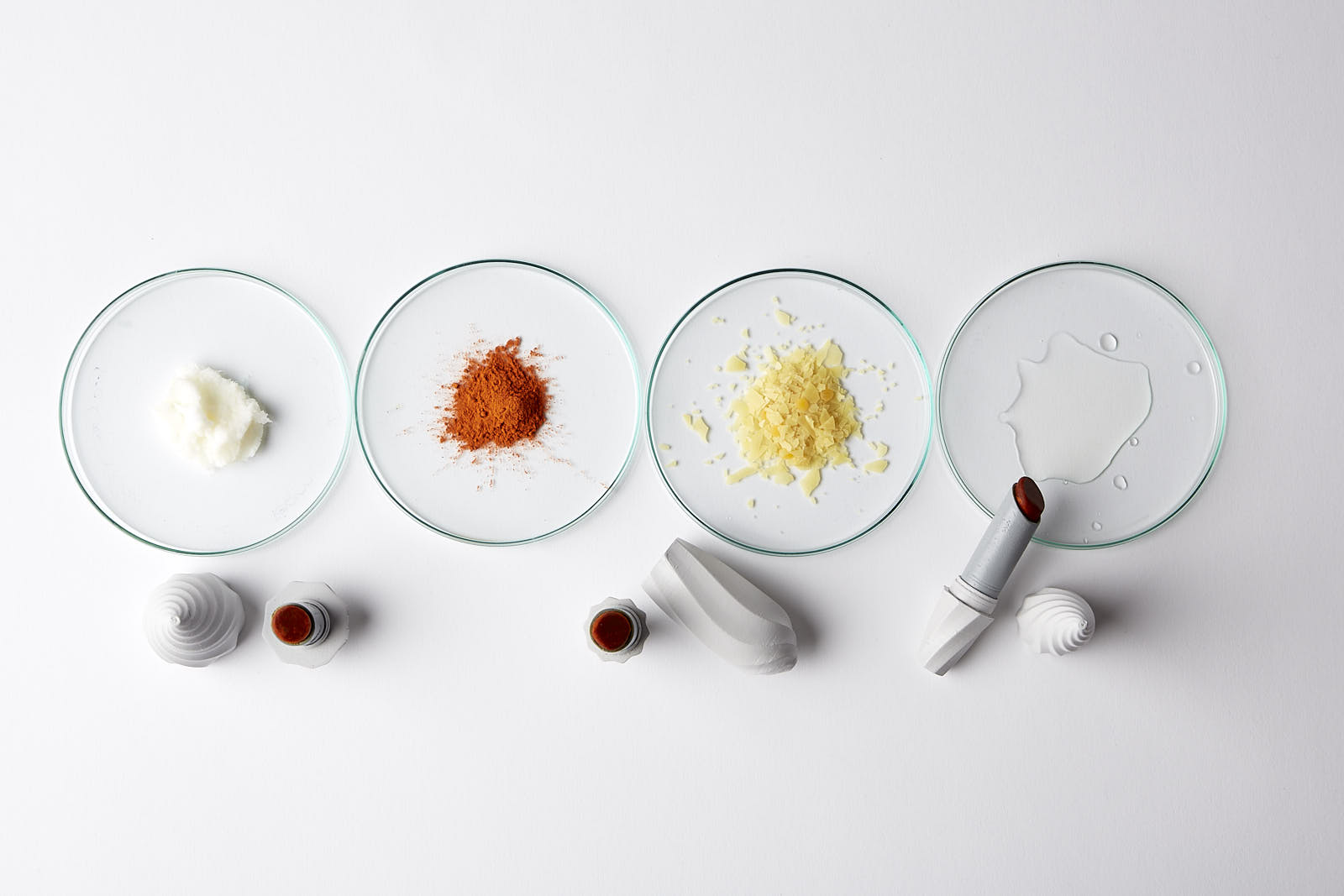
Eleonora Rombola, Algalip, MA Biodesign
Algalip
Eleonora Rombola
"What if the components of a lipstick paste and packaging could be derived from microalgae? Algalip proposes a collection of lipsticks entirely algae-based, both in their paste formulation and case material.
Microalgae can be a rich and sustainable source of diverse valuable compounds, which can be turned into oil, butter and a wide range of coloured pigments. These are suitable for colour, texture, moisture and antioxidants. Within the same production cycle, another material – a compostable algae-based 3D printing filament – can be manufactured from the same source. The algae biomass waste can be turned into a material suitable for the case and packaging of the lipstick, printing at lower temperatures than standard filaments.
The result is Algalip produced within a circular system that can be implemented locally, limiting the number of sources, transportation, and eliminating waste and toxic materials."
Algalip was the winner of the 'Sustainable Design and New Materials' award at Isola Design Awards 2021.
-
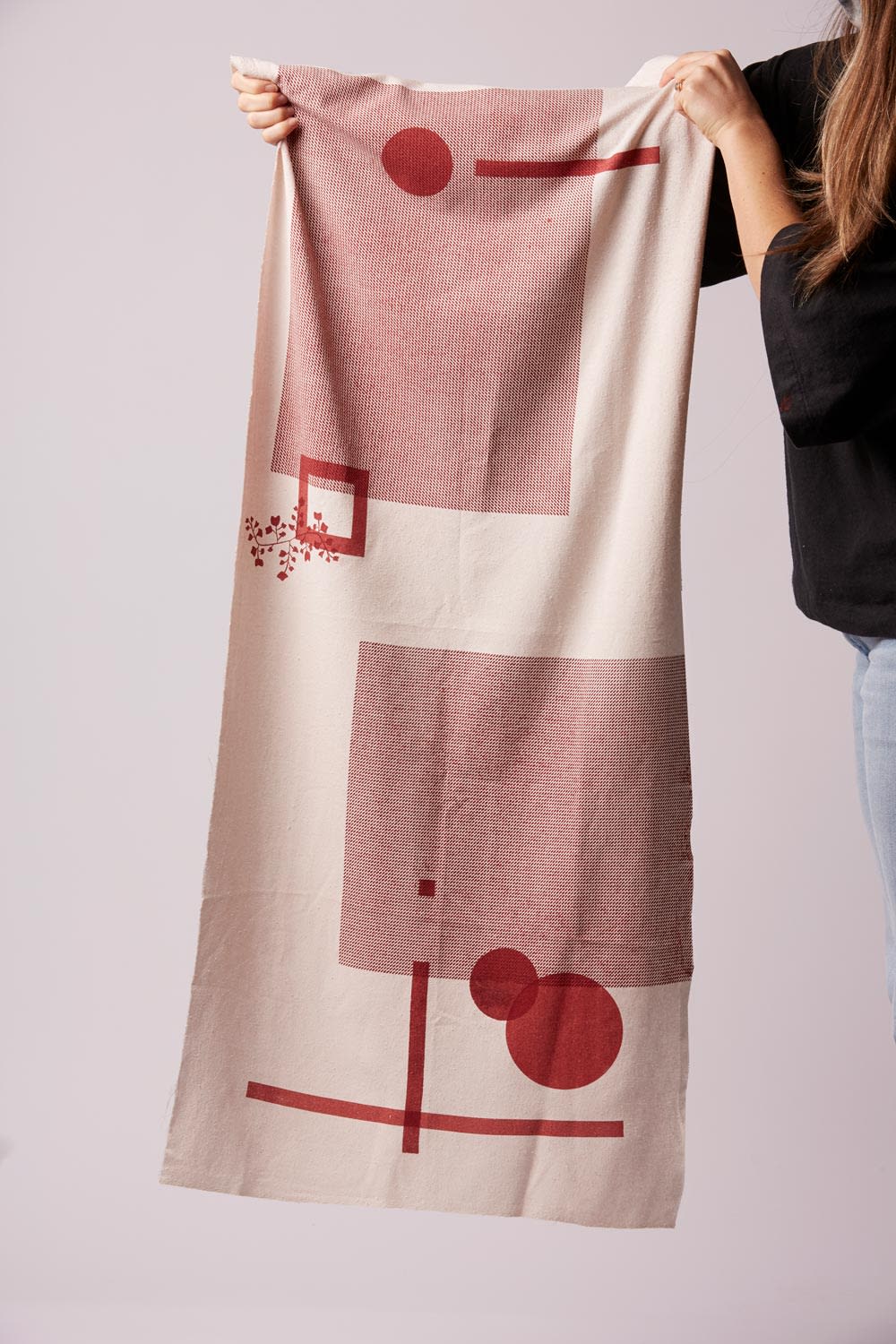
Julia Jueckstock, Hyphae Hues, MA Biodesign
-
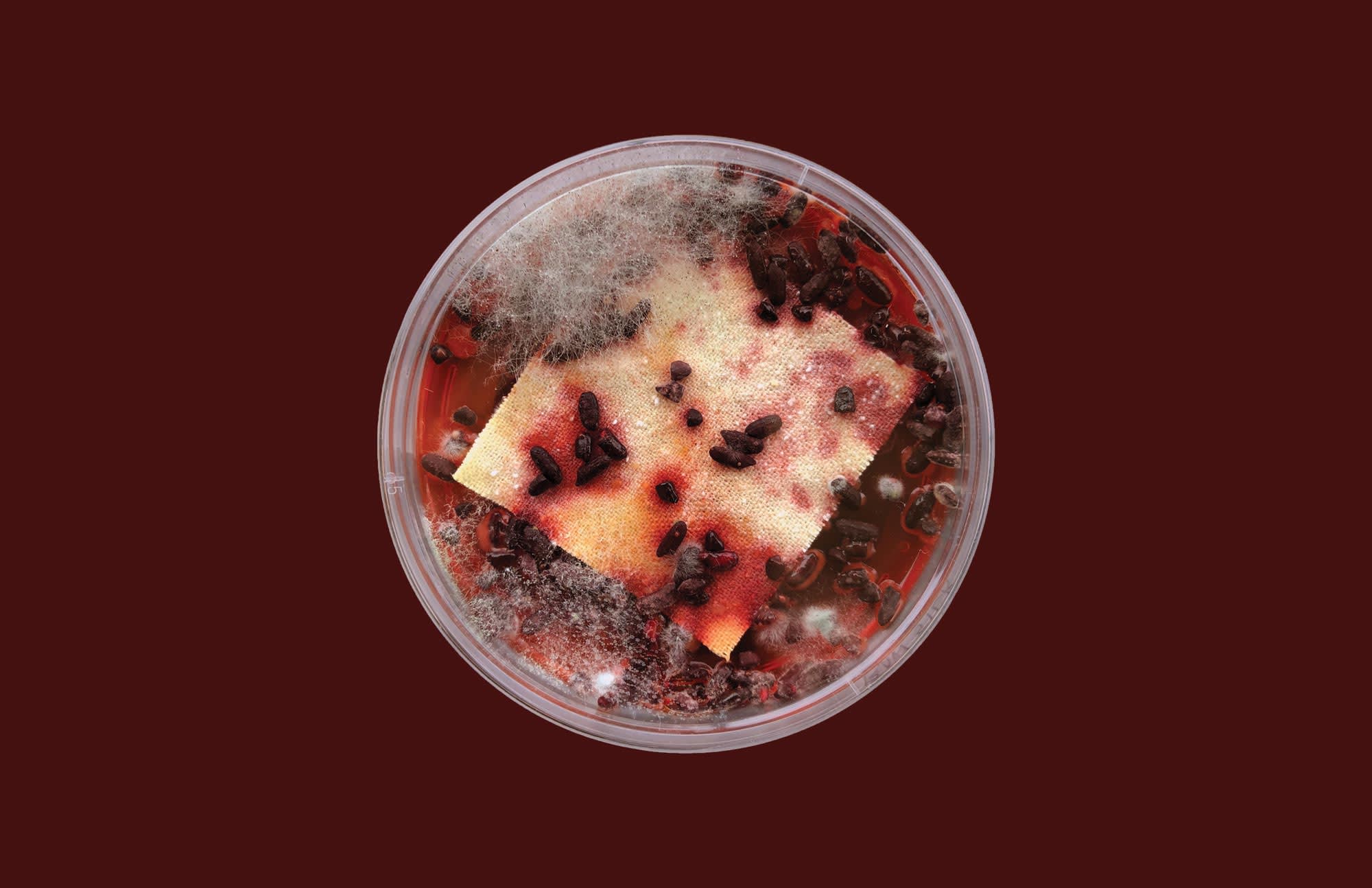
Julia Jueckstock, Hyphae Hues, MA Biodesign
Hyphae Hues
Julia Jueckstock
"By now it is widely known that the fashion industry is one of the biggest environmental polluters of our time. Hyphae Hues aims to keep thousands of chemicals from the dye industry out of rivers, lakes and oceans by growing non-toxic dye (produced by fungi!) directly onto textiles. Colours, ranging from red to yellow, can be controlled naturally by adjusting the environment in which the fungi is growing. Patterning can be self-organised by the fungi or manipulated through traditional methods, such as screen printing or stamping."
Design for Nature is on show at the International Union for the Conservation of Nature Congress in One Nature, One Future, 3-11 of September 2021 in Marseille, France.
-
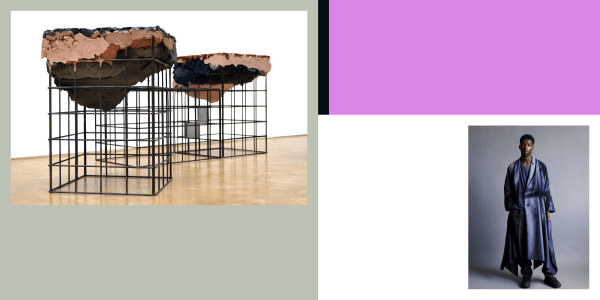
Credit: Irene Roca Moracia, MA Design (left), Jiyong Kim, BA Fashion Menswear (right)

